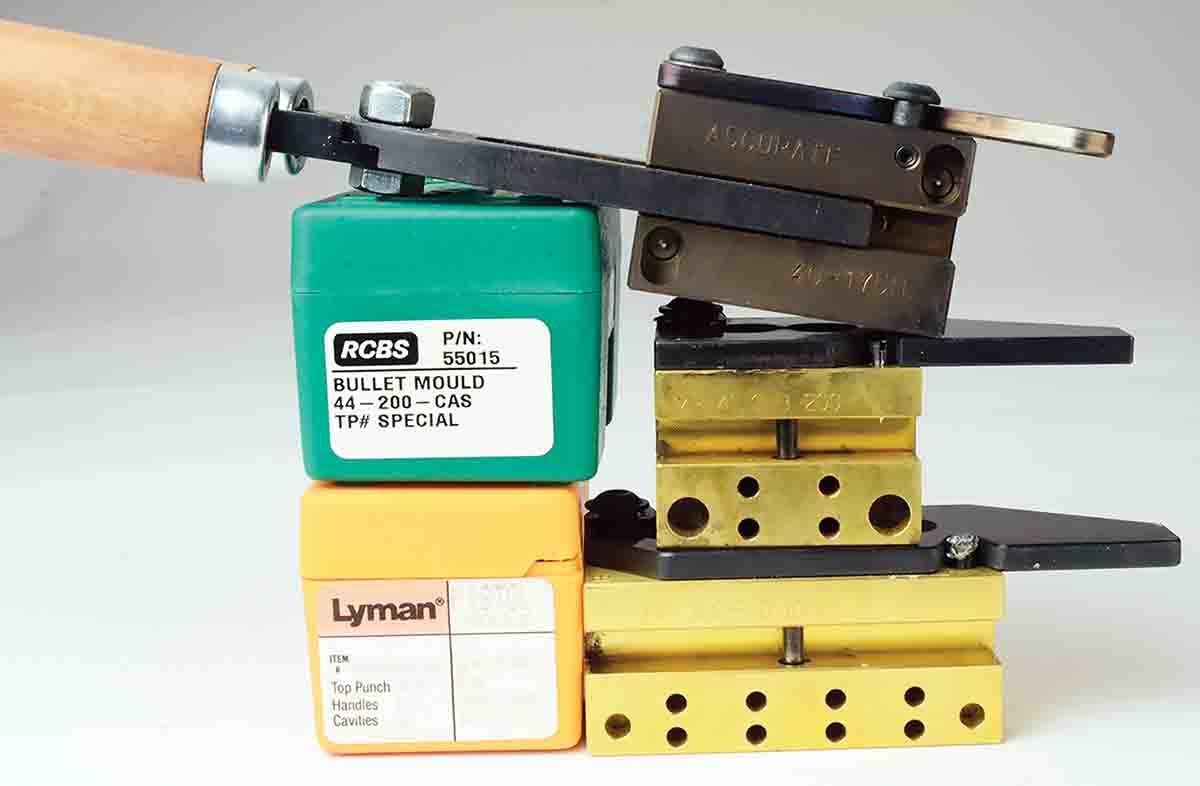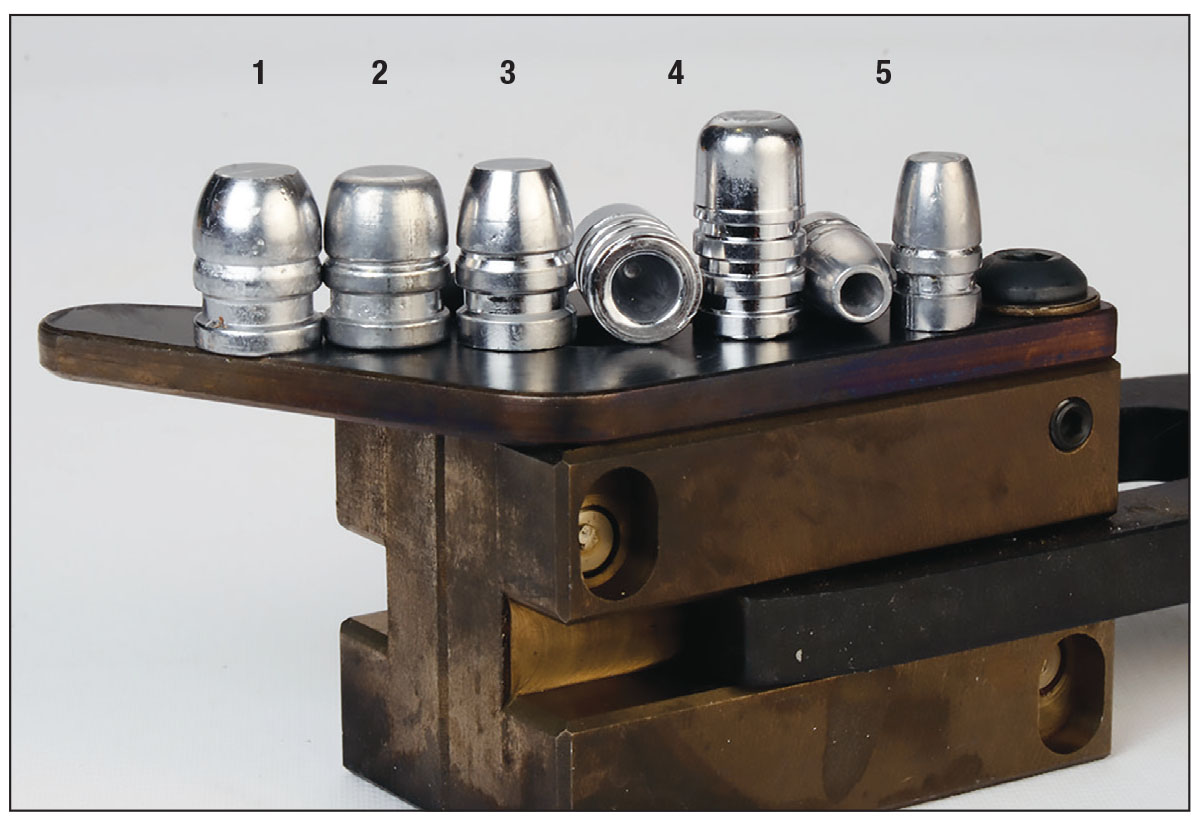Mike’s Shootin’ Shack
More Favorite Bullet Moulds
column By: Mike Venturino - Photos by Yvonne Venturino | November, 22

Consequently, much of my casting, handloading and shooting interests have returned to my first love – single-action revolvers. I’ve reacquired Colt SAAs chambered for .32-20, .38 Colt, .38 Special, .41 Long Colt and .44 Special and added more .38-40s, .44-40s and .45 Colts to the mix. I’m having a blast and all of it using only lead-alloy bullets of one sort or another.
With the several years hiatus I had from shooting single actions while working on my SHOOTING WORLD WAR II SMALL ARMS book, some of my previously owned bullet moulds for pistol-size cartridges rather mysteriously disappeared. Replacing them wasn’t just a matter of money. Some such as Lyman and Rapine .41 Long Colt hollowbase moulds can only be found used. Others, such as currently cataloged RCBS and Lyman designs, were not readily available during the recent components and equipment crunch.
One of my new favorites came all the way from the small European country of Slovenia. That was MP Mold’s 41LCHB-200, for a 200-grain hollowbase FN nominally of .386-inch diameter. While I’ve developed a preference for iron moulds over the years, ones of brass or aluminum will suffice as need demands. When visiting MP Mold’s website, that .41 Long Colt mould was in stock in the form of double cavity in brass blocks. I snapped it up instantly figuring weeks would pass for it to arrive from Europe. Not so. The mould was in my hands in seven days; dropping fine looking, well filled out, hollowbase flatnoses with just about every pouring. That’s not mentioning that a double cavity hollowbase mould increases production significantly over the traditional single-cavity moulds associated with hollowbase and hollowpoint cast bullet designs. How it shoots will be reported in a future article.
That wasn’t my only purchase from MP Molds. Actually, I bought two more upon adding three Colt SAA .32-20s and two Cimarron Arms Model 1873 .32-20s to my collection. This time, I took advantage of MP Mold’s system of one set of blocks able to cast both solid and hollowpoint bullets at the same time. Because the Colt SAAs came first, I bought a set of brass, four-cavity blocks for 314-640HP-115. That mould drops 115-grain hollowpoints or 120-grain solids.

Now, I must admit to a lengthy oversight on my part in regard to .44-40 moulds. Since the late 1980s, I have lauded RCBS 44-200FN for all my .44-40s. That prejudice existed although sitting unused on my mould shelves were both Lyman 427666 and RCBS 44-220-CM moulds. In recent work with Colt SAA revolvers with 7½-inch barrels, bullets from both shot excellently with tighter groups on the average than my old favorite. The .44-40 designs often gave sub-1.50 inch, 25-yard five groups from both revolvers. I’ve got to call it a tie with these RCBS and Lyman .44-40 cast bullets.
For a recent .38-40 handloading project, on hand were only a couple of different mould options. Perusing Accurate Molds website, I found its 40-175H; a design for a nominal 175- grain roundnose flatpoint bullet. Accurate Molds offers many options. For instance; mould block material can be aluminum, brass or iron and cavities can be from one to five. However, there are size and weight parameters that must be considered. For instance, some bullets may be too large for more than a single cavity. Accurate Molds maximum number of cavities for iron blocks is three. Four-cavity moulds can be brass or aluminum and five-cavity blocks are only that latter material.
Also, Accurate Molds lists a tolerance range of .002 inch. For example, centered tolerance means that if a .401-inch bullet is ordered, the mould may deliver .400- or .402-inch bullets. If negative tolerance is ordered, then the bullets may drop at .399 or .400 inch, but the maximum will be .401 inch. If positive tolerances are specified, then at the minimum, .401-inch bullets will drop, but they also may be .402 to .403 inch. The reason given for the .002 tolerance is because bullet casters do not always use the same alloy nor cast in the same manner.
Taking advantage of this tolerance option, I ordered my new iron, three-cavity .38-40 mould as positive. It drops roundnose flatpoint bullets of 1:20 tin-to lead alloy at .401 inch/182 grains, but when cast of linotype, they measure .403 inch/175 grains. That was done because I have one Winchester Model 1873 .38-40 rifle with a slightly oversize bore. It shoots .403-inch bullets well but sprays .401 inch ones. However, other of my .38-40 leverguns and my revolvers favor .401-inch bullets, so this one Accurate Mould covers several bases for me.
These last few years, in firing hundreds of rounds through my many single actions using mostly new to me cast bullet designs, have been educational, enjoyable and supplied five new favorites.
.jpg)


